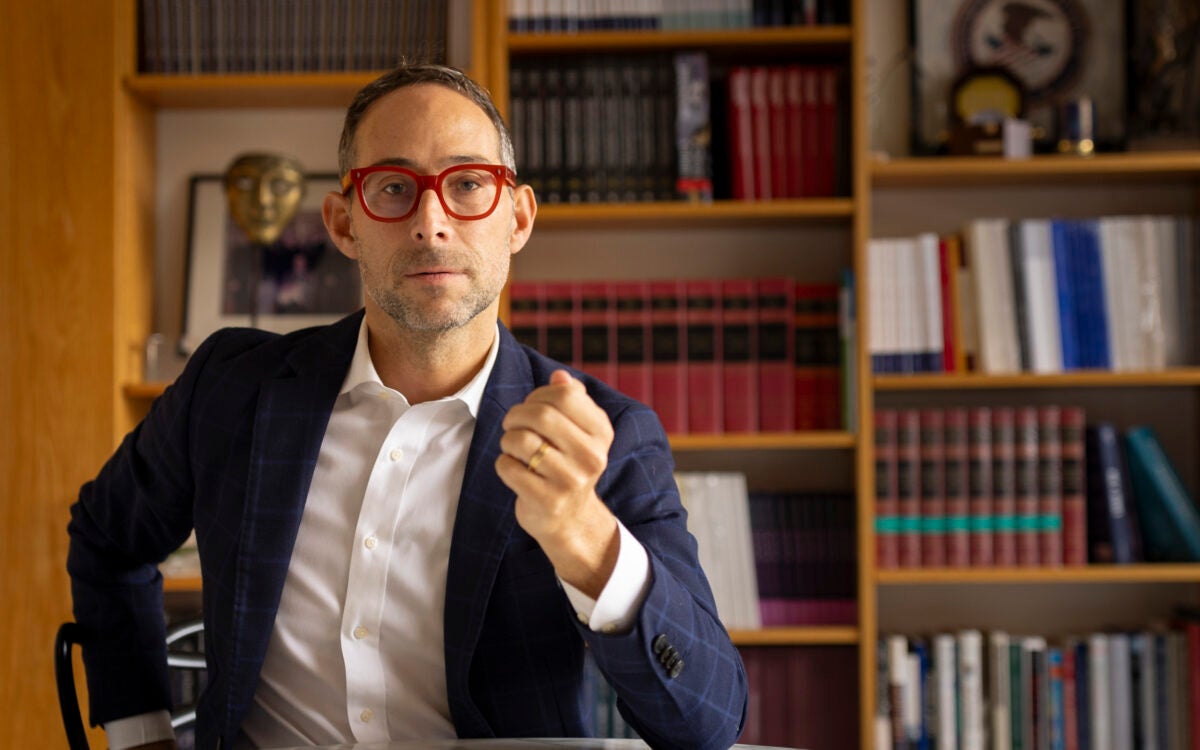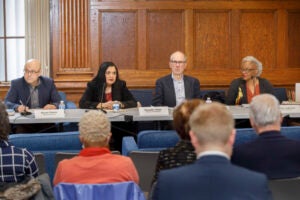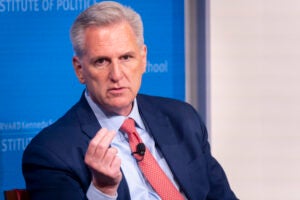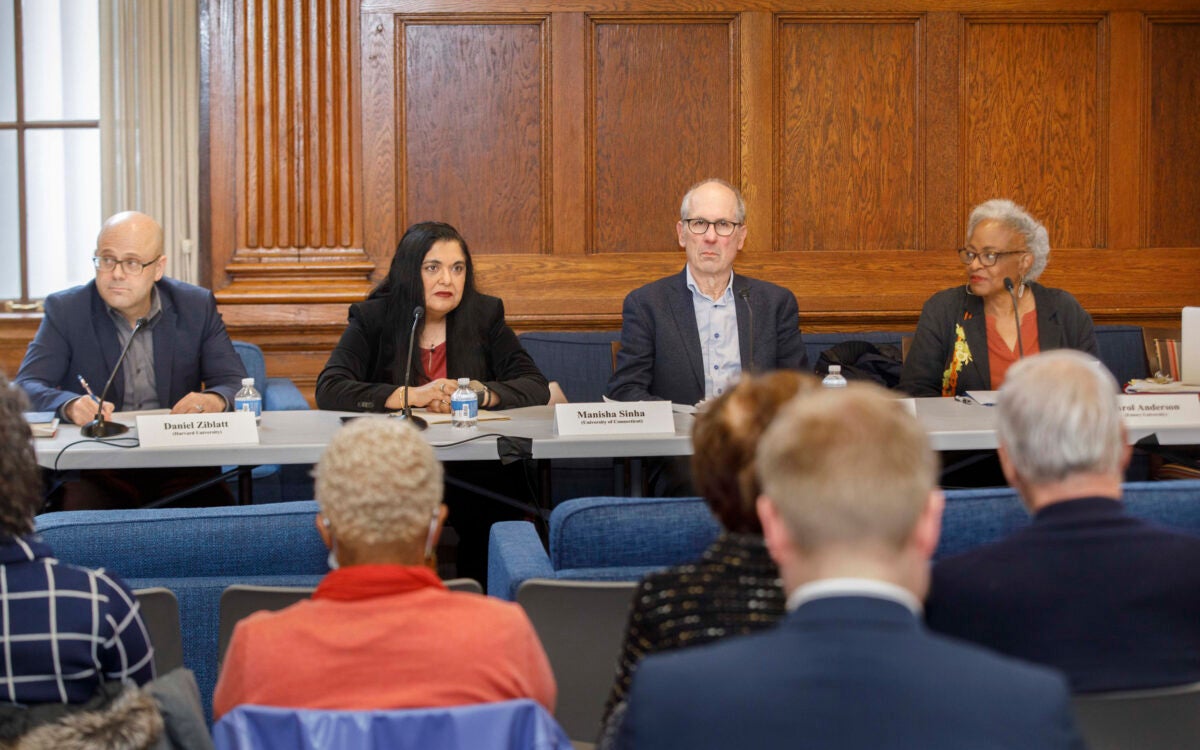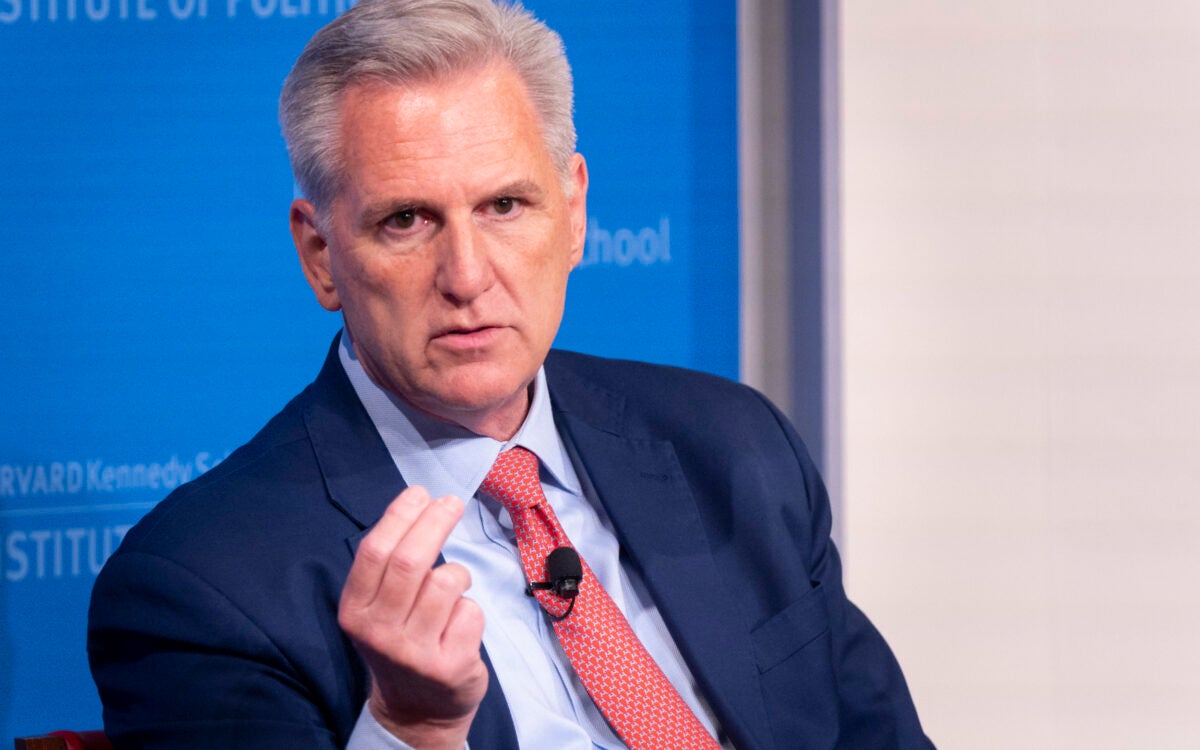Creator of skyscrapers
Harvard-trained architect builds across Asia, including high-rise schools
Part of a series about Harvard’s deep ties to Asia.
TOKYO — Seen from the 50th floor of the Mode Gakuen Cocoon Tower, the city of Tokyo fans out below, its smaller buildings looking like stacked shoeboxes. The view from the sidewalk outside isn’t bad either, as the skyscraper’s curved, latticed lines contrast starkly with the boxy high-rises nearby.
The tower, one of the city’s tallest, is unconventional in more than just design. It is a school skyscraper that contains 10,000 students in three institutions of higher education.
The striking building was designed by Paul Tange and his Tokyo-based firm, Tange Associates. Tange, who graduated from Harvard College in 1981 and the Harvard Graduate School of Design (GSD) in 1985, has created buildings around the world. But most of his work is in Asia, where his firm has contributed to the skylines of Singapore, Shanghai, Hong Kong, Beijing, and Taipei.
Family vacations on building sites
The son of famed Japanese architect Kenzo Tange, who taught at the GSD in the 1972, Tange grew up steeped in architecture. Family vacations, he recalls, featured trips to building sites in faraway countries. By the time he was 16, he thought he wanted to follow in his father’s footsteps.
But Tange also credits his years at Harvard, which began in the fall of 1977, with helping him to explore other options, to wrestle with his doubts, and cement his decision.
“I had the dilemma in the first year. I remember thinking, ‘Do I really want to be an architect, or is it because of my dad?’ ” Tange recalled. “That’s what Harvard gave me, the choice.”
Tange explored courses in statistics and economics and, though he did well, he ultimately returned his focus to architecture, which he was pursuing through a joint concentration in engineering and applied sciences and visual and environmental studies. By the time he graduated, he was sure enough that he wanted to pursue architecture at Harvard that he applied to only one graduate school, the GSD.
“In the middle of February, it just hit me: If I don’t get into GSD, what am I going to do?” Tange said, adding that his makeshift solution would have been to work construction in Harvard Square for a year while he applied to other schools.
He was accepted, however, and spent the next three and a half years developing his skills as an architect. He started out not knowing how to draw a plan but settled in among a student body of diverse backgrounds, from biology to law, drawn together by their interest in architecture.
Tange’s father didn’t push his son into the field, telling him that he should do whatever he wanted. On the day that Tange submitted his thesis, however, which happened to be his birthday, his father called from Tokyo. Tange thought that was odd, since it was his mother who usually called to wish him a happy birthday, putting his father on to talk later.
Rather than offer birthday greetings or congratulations on his thesis, Tange’s father told him there was a plane ticket to Tokyo waiting for him. His father would meet him at the airport to brief him on an architectural design competition his father wanted him to attend. Then his father would get on a plane for Paris.
“He thought it very important that the name Tange be at the presentation. That was the first time he talked to me about architecture,” Tange said.
Skyscraper of the year
Tange joined his father’s firm, eventually taking over the reins and in 2002 founding Tange Associates. His father died in 2005. The Mode Gakuen Cocoon Tower, completed in 2008 and named skyscraper of the year by Emporis.com, was the first project the firm took on after his father’s death.
The tower illustrates new thinking about the use of skyscrapers, Tange said. In crowded Asian cities, devoting vertical space to uses such as schools, which have traditionally had horizontal layouts, is a necessity. The tower, designed to embody the safety of a cocoon in which students can develop, is the 17th tallest building in Tokyo, but the second-tallest school building in the world, after Moscow State University.
“Other cities have the same problem” as Tokyo, Tange said. “We had to go vertical.”
Though Tange kept in touch with friends from college, he has only recently become more deeply involved with the University and the alumni community. Now, he is vice president of the Harvard Club of Japan, whose membership is drawn from 4,000 alumni living there. One of his goals as vice president, he said, is to bring the various Harvard Clubs across Asia closer together.
“I thought it was time for me to give back what I’ve received,” said Tange, whose daughter, Aya, is an undergraduate at Harvard. “The more I look back, the more I realize how wonderful my student days were, and that as an institution how forward-looking Harvard is.”
Carl Kay, president of the Harvard Club of Japan, said Tange is always available for help and advice. Tange also lends his office and staff for club use on important occasions, such as the 2010 visit by Harvard President Drew Faust.
“Whatever leadership skills I might have don’t make up for my lack of deep experience with Japanese honorific language and formal social customs,” Kay said. “Paul helps the club maintain good relations with our more senior Japanese members, many of whom are in top positions in business, government, or the arts. And despite his very busy travel schedule, Paul attends most board meetings, where he offers practical and sound advice on all matters. It is a great support for me to know that Paul will answer his cellphone any time I call, even though he is as likely to be in Singapore or Taiwan as Tokyo.”
Though his father remains an important influence, Tange still carries lessons from the GSD with him, including the maxim that “every line must have meaning” from Jorge Silvetti, the Nelson Robinson Jr. Professor in Architecture, and the saying that “architecture is art with social responsibility,” from former GSD Dean Josep Lluis Sert, who designed Harvard’s Holyoke Center and the Science Center, among other buildings.
Silvetti, who said Tange’s father was one of his influences, recalls Tange the student as a hard worker.
“He was a delight to work with,” Silvetti said. “He has picked up where his father left off, in terms of practice … We have very many prominent graduates, and he’s an example of that.”
Tange credits his Harvard days with instilling the intellectual rigor with which he approaches his work.
“I always ask these questions: ‘Why? Why? Why?’ That’s what Harvard taught me. You have to have the answer to everything,” Tange said. “An architect can’t repaint his canvas. You can’t do it again if you want to change it.”
For additional coverage, visit Global Harvard.
